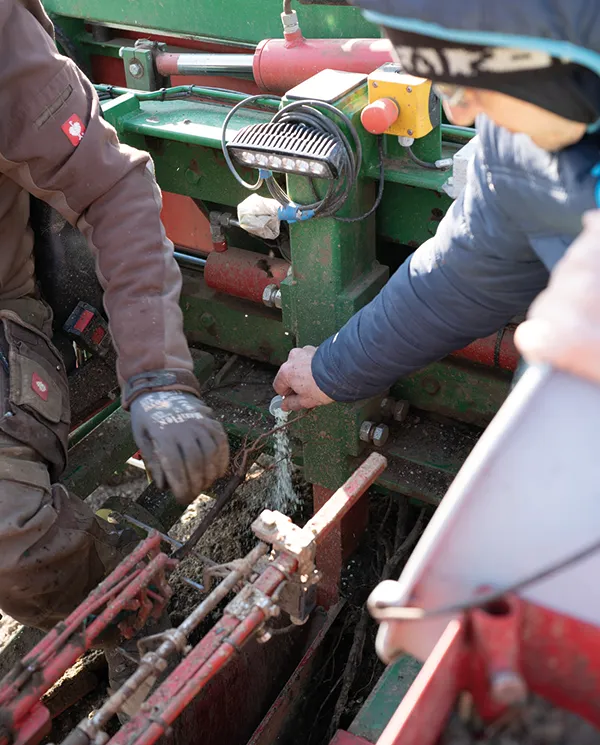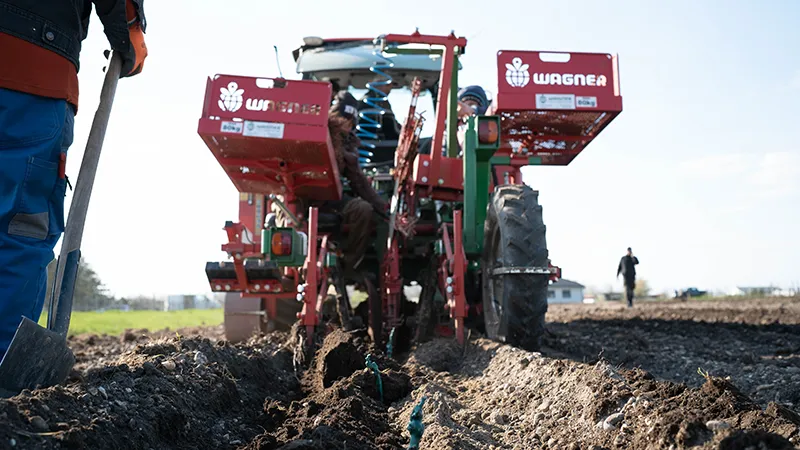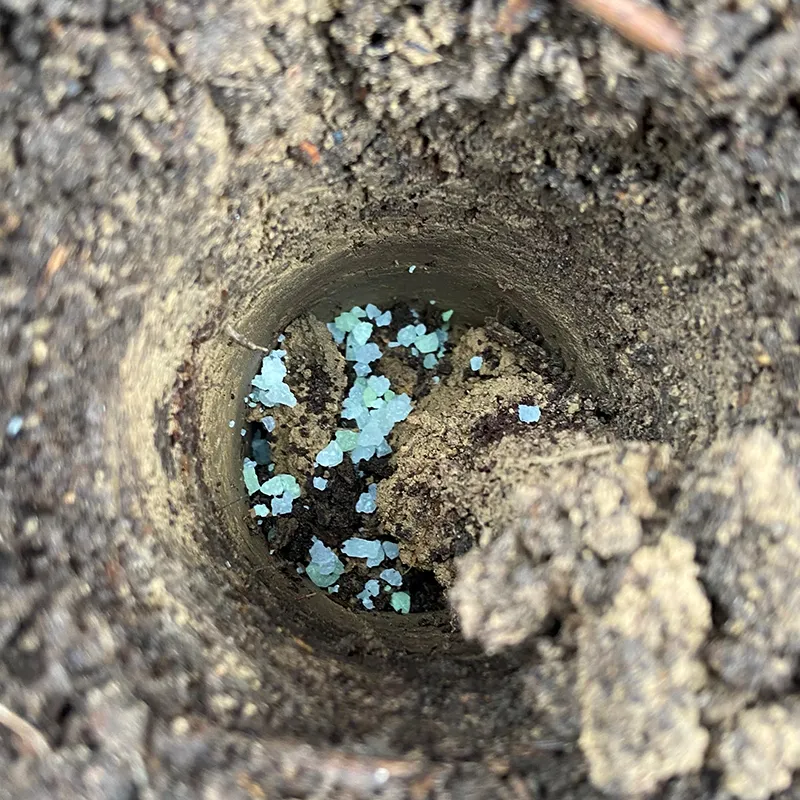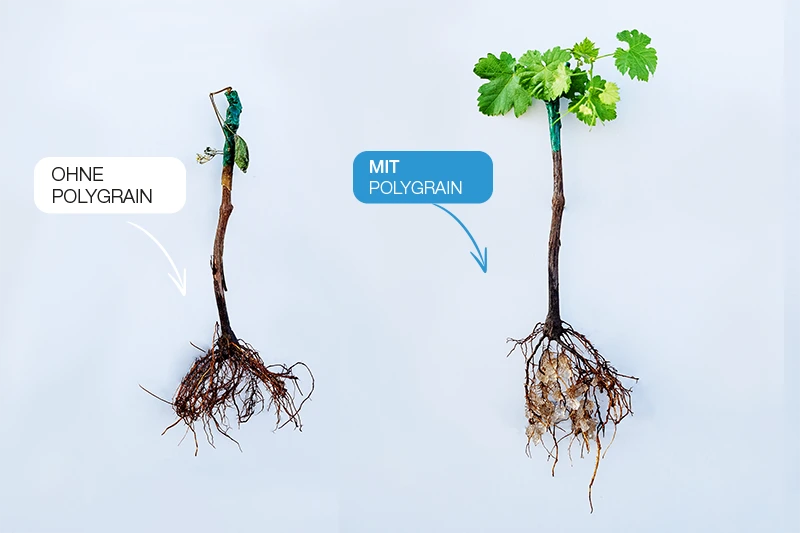Viticulture

Rising temperatures, heavy rainfall and extended periods of heat put the local winegrowers to the test. This threatens the development of young vines and can lead to a considerable reduction in quantity and quality in productive vineyards. These threats are particularly noticeable in traditional wine-growing regions such as Europe, where viticulture is deeply rooted in the culture and plays an important economic role.
Europe is home to some of the world’s leading wine-growing nations, with a total area under cultivation of over 3.2 million hectares, spread across countries such as Spain, France, Italy and Austria. These regions are responsible for producing some of the most famous wines in the world, and the quality of the grapes is of crucial importance.
In response to these challenges, we have developed POLYGRAIN, an advanced water-retaining granulate that can absorb up to 200 times its own weight in water. This property is particularly valuable for retaining moisture in the soil and supporting the vines during critical growth phases, especially in dry periods. With POLYGRAIN, we not only ensure the health and growth of the grapes, but also support the sustainable productivity and quality of your vineyards. At a time when climate change is increasingly altering growing conditions, our water-retaining granules offer an effective and reliable solution to meet modern viticultural challenges.
Simply greener
POLYGRAIN application in viticulture
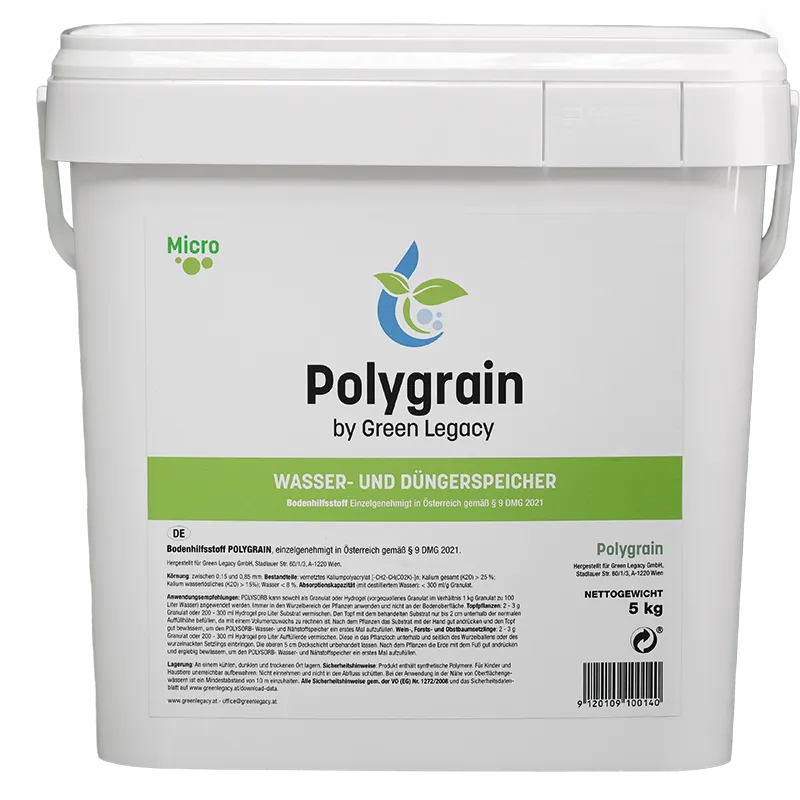


GRANULATE INTO THE SOIL


INSERT PLANT
Insert the young plant mechanically or manually as usual.

ADD WATER
This replenishes the water reservoir
for the first time.

